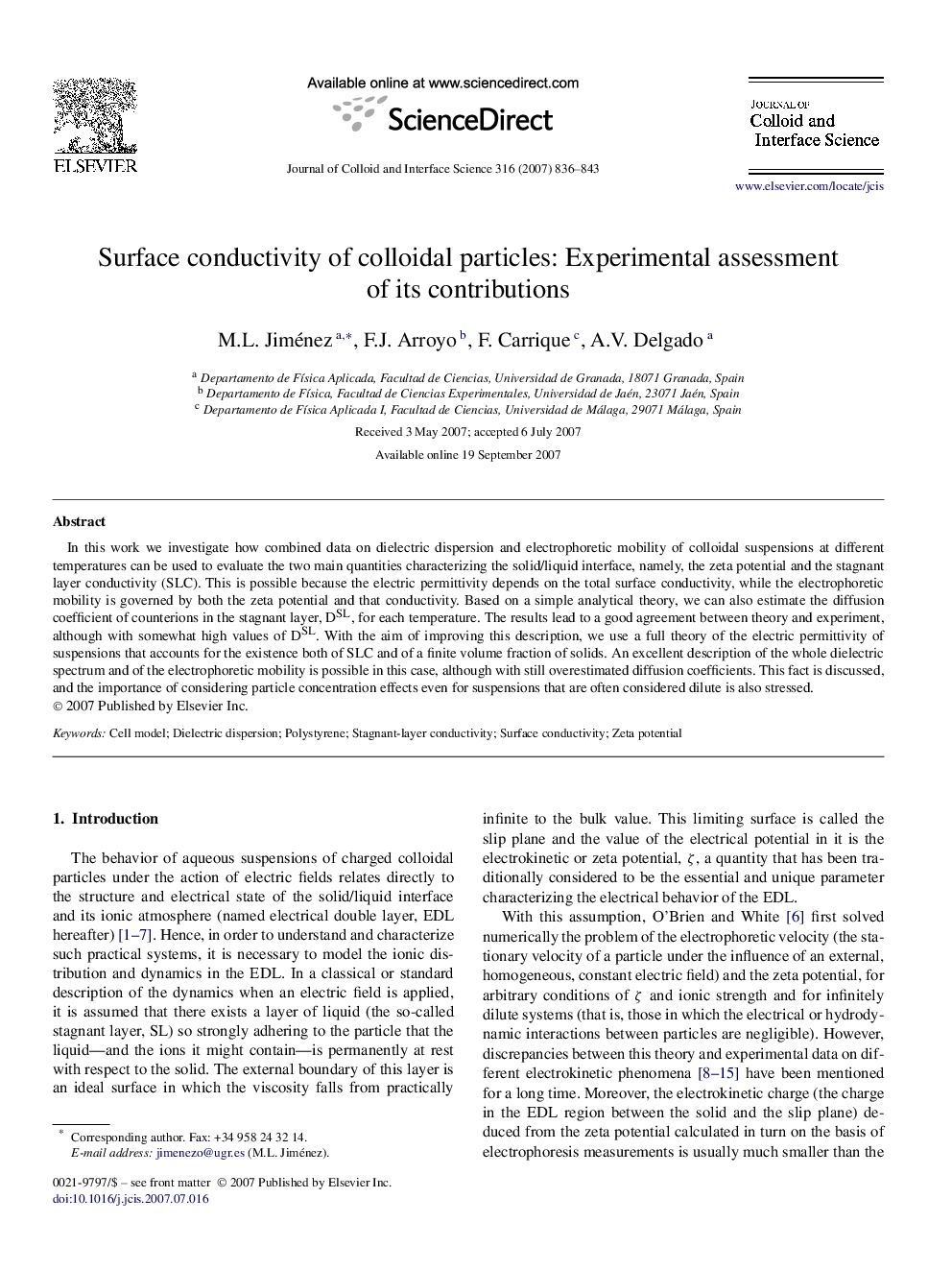| Article ID | Journal | Published Year | Pages | File Type |
|---|---|---|---|---|
| 612072 | Journal of Colloid and Interface Science | 2007 | 8 Pages |
In this work we investigate how combined data on dielectric dispersion and electrophoretic mobility of colloidal suspensions at different temperatures can be used to evaluate the two main quantities characterizing the solid/liquid interface, namely, the zeta potential and the stagnant layer conductivity (SLC). This is possible because the electric permittivity depends on the total surface conductivity, while the electrophoretic mobility is governed by both the zeta potential and that conductivity. Based on a simple analytical theory, we can also estimate the diffusion coefficient of counterions in the stagnant layer, DSLDSL, for each temperature. The results lead to a good agreement between theory and experiment, although with somewhat high values of DSLDSL. With the aim of improving this description, we use a full theory of the electric permittivity of suspensions that accounts for the existence both of SLC and of a finite volume fraction of solids. An excellent description of the whole dielectric spectrum and of the electrophoretic mobility is possible in this case, although with still overestimated diffusion coefficients. This fact is discussed, and the importance of considering particle concentration effects even for suspensions that are often considered dilute is also stressed.
Graphical abstractUsing a theory accounting for both finite volume fraction of solids and stagnant layer conductivity, it is possible to reproduce the whole experimental dielectric spectrum and the electrophoretic mobility of latex suspensions.Figure optionsDownload full-size imageDownload as PowerPoint slide
